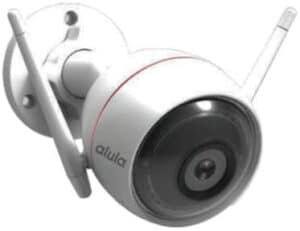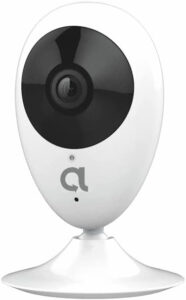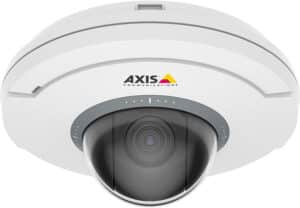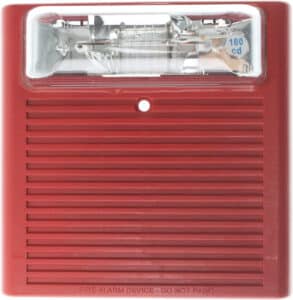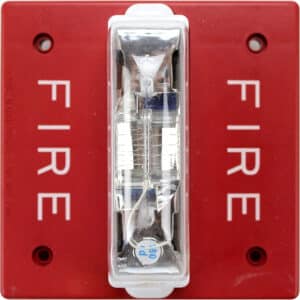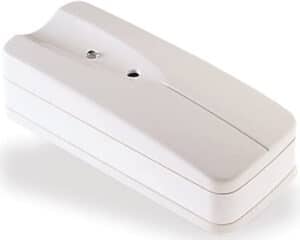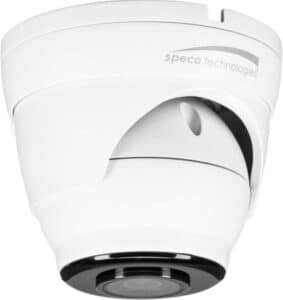A Closer Look at Home Alarm Systems with Cameras and How They Work
Home security is a major concern for homeowners, and with the advancements in technology, more and more people are turning to home alarm systems with cameras. Not only do these systems provide an added layer of protection, but they also give homeowners peace of mind when it comes to the safety of their homes and families.
In this article, we will take a closer look at home alarm systems with cameras and how they work. We will discuss the different types of cameras available, as well as the features that make them effective in deterring burglars and identifying potential threats. Additionally, we will explore how these systems can be integrated into smart home technology for even greater convenience and control. To learn more on how alarm system can protect your home, visit the link.
Table of Contents
Why Home Security is Important?
Home security is an essential aspect of protecting your property and loved ones. With the increasing rate of burglaries and home invasions, it’s crucial to invest in a reliable home alarm system with cameras. The system consists of several components, including sensors, alarms, and cameras that work together to keep your home safe.
The sensors detect any unauthorized entry into your home and immediately sound an alarm to alert you or the authorities. The cameras provide visual evidence that can help identify intruders or criminals in case of a break-in. In addition, modern systems come with mobile alerts that notify you of any unusual activity in your home when you’re away.
Overall, investing in a robust home security system gives you peace of mind knowing that your property is protected from potential threats. It also deters criminals from targeting your property since they know they’re likely to get caught on camera if they attempt a break-in. Therefore, it’s critical to choose a reliable security provider who can offer customized solutions tailored to meet your unique needs.
Overview of Home Alarm Systems
Home alarm systems are designed to protect homes from burglary, fire, and other emergencies. They consist of various components such as sensors, control panels, alarms, and cameras that work together to detect intrusion or danger and alert the homeowners or a monitoring center. The function of each component varies depending on the type of system installed.
One popular feature of modern home alarm systems is cameras. Cameras can be placed both inside and outside the house to provide an additional layer of security by capturing footage of any suspicious activity. Some systems even allow for remote viewing through a smartphone app or computer.
In addition to cameras, some home alarm systems also have motion detectors that trigger alarms when movement is detected in specific areas of the house. Other features may include carbon monoxide detectors or flood sensors that can notify homeowners in case of emergencies beyond just burglary attempts. Overall, home alarm systems provide peace of mind for homeowners by keeping their homes safe from potential threats.
Types and Components
There are several types of home alarm systems with cameras, each with its own unique components. One type is the wired system, which requires physical wiring to connect the various components of the system. These systems typically include a control panel that manages all aspects of the system, as well as sensors for doors and windows and cameras for surveillance. Another type is the wireless system, which uses radio frequency signals to communicate between components. These systems typically include a control panel, sensors for detecting motion or changes in temperature and humidity levels, and cameras.
In addition to these basic components, many home alarm systems with cameras also offer additional features such as remote monitoring capabilities through mobile apps or web portals. This allows homeowners to check in on their homes from anywhere at any time through their smartphones or computers. Some systems also include advanced features such as facial recognition technology or integration with smart home devices like thermostats and lighting.
Overall, there are many different types and components that make up a home alarm system with cameras. Whether you opt for a wired or wireless system, it’s important to choose one that meets your specific needs and offers the features you’re looking for in terms of security and convenience. With so many options available in today’s market, it’s easier than ever to find a solution that fits your budget and lifestyle while keeping your property safe from intruders.
Advantages of Cameras in Alarm Systems
One of the biggest advantages of having cameras in alarm systems is the ability to remotely monitor your home or property. With a live feed from the cameras, you can check on your home at any time and from anywhere, giving you peace of mind when you’re away. This can also be helpful for checking on pets or monitoring children who are home alone.
Another advantage is that cameras can provide valuable evidence in the event of a break-in or other security breach. The footage captured by the cameras can help police identify suspects and prosecute criminals. Additionally, some insurance companies offer discounts to homeowners who have alarm systems with cameras, as they are seen as an added layer of protection.
Finally, having cameras in your alarm system can act as a deterrent to potential intruders. The presence of visible cameras may discourage burglars from attempting to break into your home or property, making it less likely that you will experience a security breach. This not only protects your belongings but also ensures the safety and well-being of those inside the premises.
Real-Time Monitoring and Evidence
Real-time monitoring and evidence are two crucial components of home alarm systems with cameras. These systems use advanced technology to monitor your home in real-time, providing you with a constant feed of what’s happening inside and outside your property. This means that you can keep an eye on your home even when you’re not there, giving you peace of mind knowing that everything is under control.
In addition to real-time monitoring, these alarm systems also provide valuable evidence in the event of a break-in or other security breach. The cameras record footage round-the-clock, which can be accessed remotely from any device with an internet connection. This footage can be used as evidence in court if necessary, helping law enforcement to identify and prosecute perpetrators.
Overall, real-time monitoring and evidence make home alarm systems with cameras an excellent investment for anyone looking to improve their home security. With this technology at your fingertips, you can rest easy knowing that your property is being monitored 24/7 and that any potential threats will be captured on camera for future reference.
How Cameras in an Alarm System Work
Cameras in alarm systems are an essential feature that helps monitor and secure homes. These cameras work differently depending on the type of system installed. Some camera systems operate continuously, while others are motion-activated. The cameras capture images or videos and transmit them to a remote monitoring center or directly to the homeowner’s phone.
Infrared sensors enable cameras to capture images in low light conditions by emitting infrared radiation, which reflects off objects and returns as heat signatures. This technology is called thermal imaging, and it allows cameras to detect movement even in complete darkness. The camera’s software analyzes the data captured by the sensors and records any movement that exceeds specific parameters.
Wireless cameras use Wi-Fi connections to send images or videos directly to a mobile device such as a smartphone or tablet. The system also includes storage devices where recorded footage is stored for later viewing if required. Cameras can be placed inside homes or outdoors in strategic locations such as entry points, garages, backyards, etc., providing additional layers of security for homeowners with added peace of mind when they’re away from home.
Motion Detection and Video Recording
Motion detection and video recording are two key features of home alarm systems with cameras. By using motion sensors, these systems can detect any movement within their range and alert the homeowner or security provider. This feature is particularly useful in detecting intruders who try to enter the property without permission.
Video recording is also a vital component of home alarm systems as it provides visual evidence of any suspicious activity. The cameras installed in these systems can capture footage in high-definition quality and store them securely on a cloud-based server or an external storage device. In case of a break-in, homeowners can provide this footage to law enforcement officials as evidence which could lead to the identification and arrest of the perpetrators.
Moreover, these systems also allow remote access to live feeds from the cameras through mobile applications, providing homeowners with real-time updates on what’s happening at their property even when they’re not physically present there. This added layer of security gives peace of mind to homeowners who can monitor their homes from anywhere at any time, ensuring that their loved ones and valuables are safe from harm.
Types of Cameras Used in Home Alarm Systems
There are several types of cameras that can be used in home alarm systems. The most common type is the traditional analog camera, which captures and transmits video footage through a wired or wireless connection to a monitoring system. These cameras are typically low-cost and easy to install, but they may not provide high-quality images or offer advanced features like motion detection.
Another type of camera that is gaining popularity is the IP camera, which uses digital technology to capture and transmit video data over an internet connection. IP cameras offer higher-resolution images than analog cameras, as well as advanced features like remote access and motion detection alerts. However, they are more expensive than analog cameras and require a strong internet connection for optimal performance.
Finally, there are also wireless cameras that can be integrated into home alarm systems. These cameras are battery-powered and do not require any wiring or drilling for installation. They work by transmitting video data wirelessly to a central monitoring system using Wi-Fi or cellular networks. While they may be more convenient to install than other types of cameras, they may not provide the same level of reliability as wired systems due to potential connectivity issues with Wi-Fi or cellular networks.
Indoor, Outdoor, and Doorbell Cameras
Indoor cameras are designed to capture footage of the inside of your home. They can be placed in common areas such as living rooms, kitchens, and hallways. These cameras offer a great way to monitor what’s happening inside your home when you’re away, and they can be useful for keeping an eye on pets or children while you’re at work. Indoor cameras typically have a wider field of view than outdoor cameras and are less expensive.
Outdoor cameras, on the other hand, are designed to capture footage outside your home. They can be mounted on walls or ceilings and are weather-resistant to withstand harsh conditions such as rain, wind, and snow. Outdoor cameras come with features like motion detection and night vision that allow them to capture clear footage even in low-light conditions. These cameras provide an added layer of security to your home by allowing you to monitor activity outside your property.
Doorbell cameras offer an innovative way to keep tabs on who is coming and going from your home. They are mounted near the front door or gate entryway and allow homeowners to see live video feeds of anyone who approaches their property. Doorbell cameras come equipped with motion sensors that trigger alerts when someone comes within range. Some models also feature two-way audio that enables homeowners to communicate with visitors from their smartphone or tablet device – whether they’re at work or on vacation!
Choosing the Right Home Alarm System with Cameras
When it comes to protecting our homes, nothing beats the peace of mind that a reliable home alarm system with cameras can provide. But with so many different types and models available on the market, choosing the right one can be overwhelming. One of the most important factors to consider is whether you want your security cameras to be wired or wireless.
Wired cameras require professional installation and are harder to move around once they have been installed. However, they are generally more reliable than wireless cameras as they are not subject to interference from other devices and are less susceptible to hacking. Wireless cameras, on the other hand, are much easier to install yourself and can be moved around as needed. They do have a higher risk of interference from other devices though.
Another factor to consider when choosing a home alarm system with cameras is whether you want your footage stored locally or in the cloud. Local storage means that your footage will be stored on an internal hard drive or memory card within your camera itself. Cloud storage means that your footage will be stored remotely on a server maintained by your security provider. Both options have their pros and cons – local storage gives you complete control over who has access to your footage but also means that if someone steals or damages your camera, you could lose all of your recorded footage. Cloud storage ensures that even if something happens to your camera, you’ll still have access to any recorded footage remotely but also means potentially giving up some control over who has access to it.
Factors to Consider
When considering a home alarm system with cameras, there are several factors to keep in mind. Firstly, it’s important to decide whether you want a wired or wireless system. Wired systems require professional installation and can be more difficult to modify, but they offer greater reliability and security. Wireless systems are easier to install and can be moved around more easily, but they may not be as secure.
Another factor to consider is the type of camera you want. Do you need a fixed camera that points in one direction, or do you need a pan-tilt-zoom (PTZ) camera that can move around remotely? Fixed cameras are generally less expensive and easier to set up, but PTZ cameras offer greater flexibility for monitoring different areas of your home.
Finally, it’s important to choose a reliable alarm monitoring service. This service will notify you and the authorities in case of an intrusion or other emergency. Look for a company with 24/7 monitoring services and positive customer reviews. With these factors in mind, you can find the right home alarm system with cameras that meets your needs and helps keep your home safe and secure.
Conclusion: The Importance of a Comprehensive Security System
In conclusion, we’ve taken a closer look at home alarm systems with cameras and how they work to keep your home safe and secure. From surveillance cameras to smart home technology, these systems offer top-quality features that give you the peace of mind you need in today’s security-conscious world.
The importance of having a reliable and effective home security system cannot be overstated, which is why Xcessory Zone offers a range of e-commerce DIY home security solutions that are designed to meet all your unique needs. Whether you’re looking for professional monitoring, intruder detection, or alarm maintenance services, Xcessory Zone has got you covered.
Finally, we encourage you to take action in protecting your home and family by investing in a home alarm system with cameras. Be proactive and get the peace of mind you need by exploring the wide range of Xcessory Zone’s home security solutions today. Choose the best package that suits your needs and let Xcessory Zone help you keep your home safe and secure.
FAQs
What is a home alarm system with cameras?
A home alarm system with cameras is a security solution that integrates surveillance cameras into an alarm system to provide comprehensive protection against burglaries and intrusions. These systems typically consist of several components, including door and window sensors, motion detectors, control panels, and video cameras.
How do home alarm systems with cameras work?
Home alarm systems with cameras work by detecting any movement or activity on the premises through sensors placed around the house or property. When triggered, the system sends an alert to the homeowner or monitoring company in real time via email or SMS notifications, or audio alarms.
Are there different types of home alarm systems with cameras?
Yes, there are different types of home alarm systems with cameras available for homeowners to choose from depending on their needs and budget. For example, some systems use wired connections between components while others utilize wireless connectivity for more flexibility in installation and placement.
Overall, home alarm systems with cameras are an effective way to protect your property from theft or damage by providing 24/7 surveillance and alerts when unauthorized activity occurs on your premises. With various options available in terms of size, features, and price points it’s important to research thoroughly before making a purchasing decision that best fits your individual needs as well as budget constraints.
Meet Our Partners!




